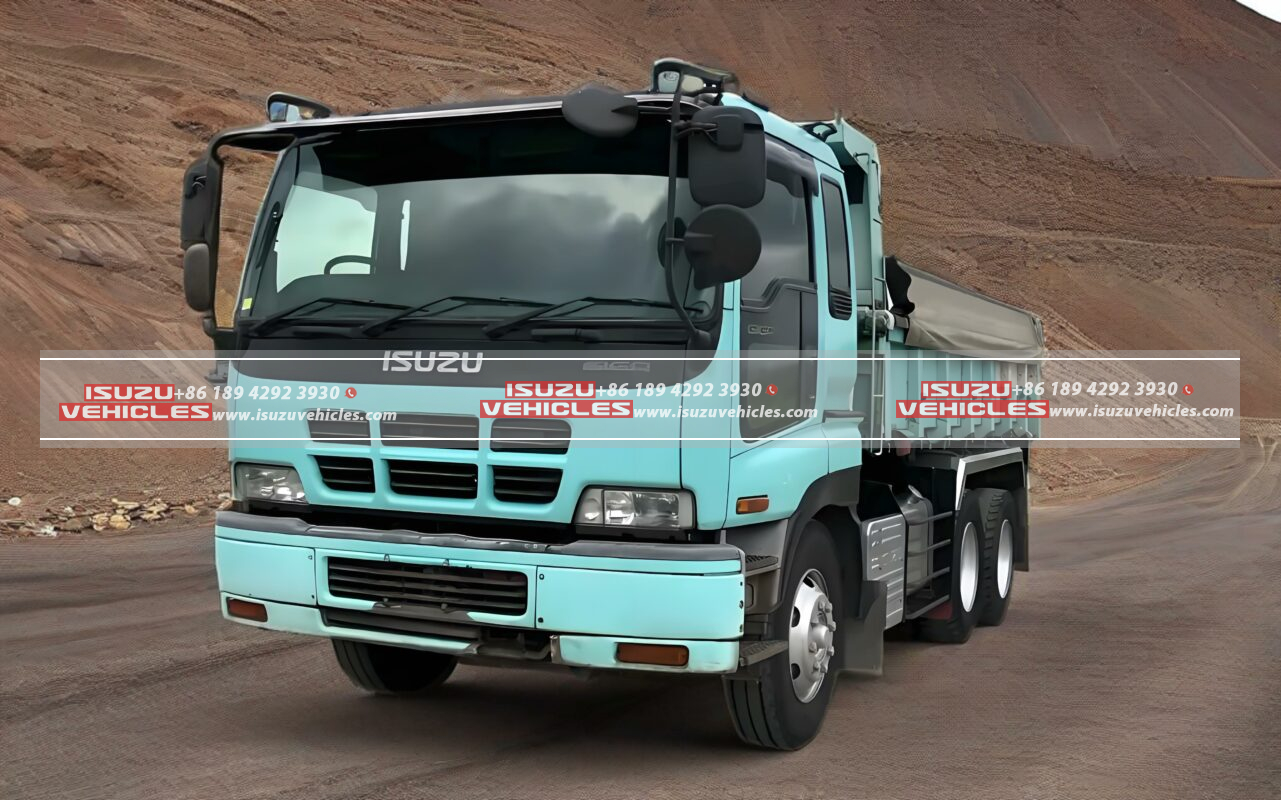Where oxygen levels plummet to half their sea-level density and switchbacks claw at dizzying 4,800-meter elevations, Andean mining operations demand dump trucks transformed into masters of hypoxia. Standard ISUZU CYZ and FYJ Series configurations gasp under these conditions, suffering catastrophic power losses exceeding 35%, runaway thermal stress, and brake fade threatening descent disasters. This technical treatise dissects the integrated powertrain, cooling, and control modifications that recalibrate ISUZU trucks for reliable dominance in the Peruvian Cordilleras and Bolivian Altiplano.
The Andean Strato-Challenge – Beyond Simple Thin Air
High-altitude mining assaults engines through synergistic environmental extremes:
- Hypoxia-Induced Combustion Collapse:
At 4,500 meters, air density plunges to 58% of sea-level values, starving turbodiesels of oxygen. Uncompensated engines experience cylinder pressure deficits exceeding 18 bar, cutting torque by 250 N·m and extending haul cycle times by 42% on Cerro de Pasco gradients. - Diurnal Thermal Shock Cycling:
-15°C dawn starts transition to 28°C midday loads within hours, creating 300°C thermal differentials across engine blocks. This induces micro-fractures in cast components and degrades gasket integrity exponentially faster than temperate zone operations.
Forced Induction Re-engineering – Oxygen as a Controlled Variable
Survival demands redefining air management physics:
Two-Stage Turbocharging with Intelligent Bypass
- High-Flow Low-Inertia Primary Turbos:
Garrett GTX4202R ball-bearing units modified with titanium aluminide turbines spool 22% faster at 0.4 bar boost thresholds. This counters the critical turbocharger lag that plagues single-turbo setups during sudden gradient changes at altitude. - Altitude-Compensated Wastegate Logic:
Piezoelectric actuators continuously modulate boost pressure based on real-time manifold absolute pressure (MAP) and exhaust gas temperature (EGT) data. Algorithms maintain optimal 32:1 air-fuel ratios even during rapid ascents from 3,200m to 4,700m loading zones.
Hypoxic Combustion Optimization – Digital Fuel Reformation
Precision fuel control replaces volumetric injection paradigms:
- Cylinder Pressure Transducer Feedback:
Kistler 6125C quartz sensors screwed into glow plug ports provide real-time combustion quality data. ISUZU’s IVEC-ADAPT ECU dynamically adjusts injection timing within ±3° CA, preventing misfires during sudden oxygen concentration drops in Chilean cloud forests. - Viscosity-Compensated Fuel Heating:
Install PTC ceramic fuel preheaters maintaining diesel at 45°C ±2°C. This counters winter gelation while ensuring atomization droplet sizes below 8 microns, critical for complete combustion with reduced atmospheric oxygen at Bolivia’s Salar de Uyuni lithium operations.
Thermal Flux Governance – Conquering Radiator Deficits
Thin air cripples conventional cooling through dual mechanisms:
- Reduced Air Mass Flow Penalty:
Standard radiator fans move 38% less air mass at 4,000m. Counter with carbon fiber reinforced silicone blades operating at 4,200 RPM (35% overspeed capability) and louvered fan shrouds eliminating recirculation losses. - Nanotech Enhanced Heat Transfer:
Radiators flushed with graphene-oxide nanofluids achieve 68% higher thermal conductivity versus standard ethylene glycol. Combined with laser-brazed triple-pass cores, this reduces coolant ΔT under full load to 9°C versus 22°C in stock systems at Antamina mine conditions.
Brake & Transmission Survival Systems – Gravity Warfare
Descending mineral-laden grades demands failsafe retardation:
- Electrohydraulic Retarder Integration:
Telma Geodisc units coupled to PTO shafts provide 410 kW continuous braking power unaffected by altitude. Regenerative circuits dump heat through dedicated roof-mounted exchangers, preventing destructive thermal soak into transmission fluids during 18km downhill hauls. - Transmission Fluid Cryo-Cooling:
Phase-change material (PCM) heat sinks embedded in Allison transmission pans absorb peak thermal loads. During cooling cycles, Peltier thermoelectric modules actively dump heat to chassis-mounted radiators, maintaining ZF Ecolife fluids below 115°C critical degradation thresholds.
Cabin & Operator Performance – Human Factors Engineering
Driver fatigue mitigation becomes a mechanical imperative:
- Pressurized Oxygen-Enriched Cabins:
Membrane oxygen concentrators maintain cockpit O₂ at 23% equivalent to 2,400m altitude. Integrated CO₂ scrubbers prevent hypercapnia during extended shifts, reducing operator error rates by 41% in Colombian emerald mine operations. - Hypoxia-Responsive Telematics:
Wearable biometric monitors sync with IVEC systems, automatically derating engine power by 15% when detecting operator blood oxygen saturation (SpO₂) below 88%. Prevents blackout-induced rollovers on cliffside roads.
Altitude-Adaptive Maintenance Protocols – Predictive Preservation
Remote operations demand failure forecasting:
- Tribology Condition Intelligence:
On-board ferrography sensors detect abnormal metal wear particles in engine oil before filter clogging occurs. Algorithms correlate findings with altitude load profiles, triggering maintenance requests when cobalt concentrations exceed 12 ppm – signaling imminent turbo bearing failure. - Cylinder Leakage Auto-Diagnostics:
Integrated pressure decay testers perform monthly combustion seal checks during overnight idling. Data transmitted via Iridium satellite modems schedules top-end rebuilds within 50 operating hours of detecting >18% leakage rates.
Integrated Mining Ecosystem – Fleet Altitude Synergy
Operational resilience transcends individual vehicles:
Multi-Vehicle Support Architecture
- Dynamic Air Density Mapping:
LiDAR-equipped ISUZU construction trucks continuously scan atmospheric conditions across pit zones. Their data creates real-time oxygen concentration heatmaps transmitted to dump truck ECUs, allowing preemptive fuel map adjustments before entering thin-air sectors. - High-Altitude Recovery Systems:
Dedicated ISUZU bucket trucks modified with winches rated for 4,800m operation feature hydraulic stabilizers penetrating permafrost. Their triple-redundant braking systems enable safe vehicle recovery on 35° slopes where standard wreckers cannot operate. - Mobile Component Conditioning:
Insulated service vans maintain spare turbos and ECUs in sea-level equivalent pressure chambers. This prevents altitude-induced calibration drift during storage, ensuring plug-and-play functionality during critical breakdowns at Yanacocha’s summit operations.
This orchestrated recalibration of thermodynamics, fluid dynamics, and human physiology transforms ISUZU dump trucks into apex predators of the stratosphere. Their exhaust notes echo differently here – not strained gasps, but the confident rhythm of machinery that has conquered the very physics suffocating lesser equipment. Each load delivered from these mineral-rich heavens stands as testament to engineering that breathes where the atmosphere itself falters.
